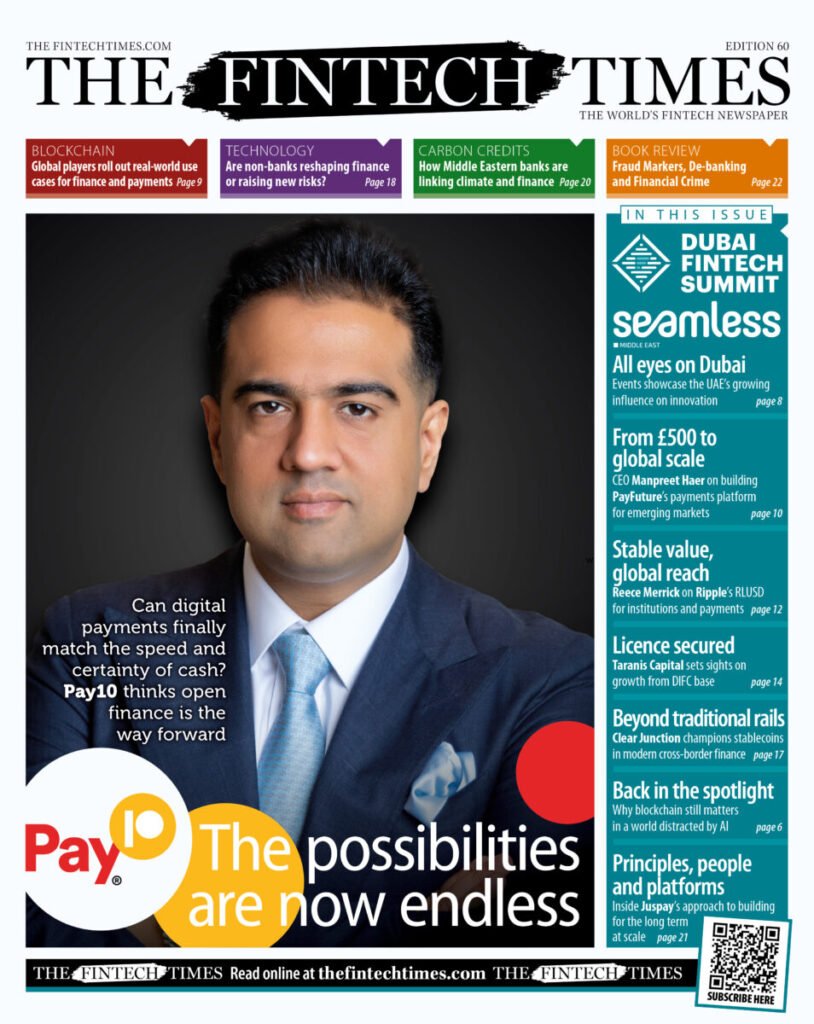Beyond the ledger
Blockchain has been part of financial infrastructure for years, from powering cross-border settlements to supporting stablecoin transactions and digital asset custody. But until recently, much of that progress sat in the background, often overshadowed by crypto hype or regulatory noise.
Now, as institutions double down on stablecoins and on-chain transfers, blockchain is starting to get clearer recognition for what it really is: not just a speculative tool, but a serious piece of financial plumbing.
This edition of The Fintech Times looks at where blockchain is genuinely adding value, and what might still be holding it back. Stablecoin transfer volumes are catching up with Visa and Mastercard: proof that on-chain infrastructure isn’t theoretical, it’s already playing a serious role in global finance. From large-scale payments to the rollout of institutional tokens like Ripple’s RLUSD, blockchain is being put to work in practical, measurable ways.
On page 12, we hear from Ripple’s Reece Merrick, who outlines why the company launched RLUSD and how it’s positioning the token for institutional use. He shares insights on compliance, cross-border settlement and the growing role of stablecoins in bridging traditional finance with digital infrastructure.
On page 6, Francis Bignell asks a simple but important question: has blockchain lost its moment, or is it just getting started? With so much attention fixed on AI, we look at what needs to shift – whether it’s regulation, usability or public perception – for blockchain to fulfil the role so many expected of it.
Also in this issue, David Unsdorfer from Clear Junction lays out why on-chain transfers are quickly becoming standard practice for financial institutions. With stablecoin volumes now overtaking card networks, he explains why it’s less about whether to adopt blockchain rails, and more about how to do it without falling behind.
But there’s plenty more in this issue beyond blockchain.
We also take a closer look at the growing role of carbon credits in Middle Eastern finance. With banks in the region now actively involved in carbon trading, green loans, and project financing, Nina Saleh explores how institutions are integrating environmental goals into their financial strategies, and what that means for the region’s transition to a lower-carbon economy.
In our Culture section, we speak to Sheetal Lalwani, COO and co-founder at Juspay, about the company’s approach to scaling infrastructure, building with open source and maintaining long-term focus through principles set over a decade ago.
We also hear from Pay10 founder Harry Gill, as the company expands its presence in the UAE with a full set of licences to support open finance, faster settlements and merchant-specific QR payments designed for small businesses.
And PayFuture CEO Manpreet Haer shares how the company is supporting digital payments across emerging markets by combining local insight with global reach, and what it means to scale without outside funding.
We hope you enjoy the issue – happy reading!

